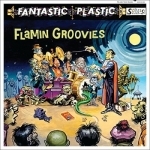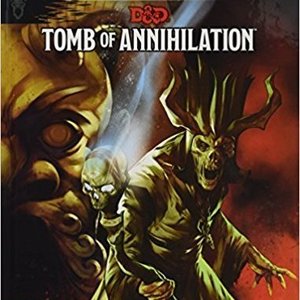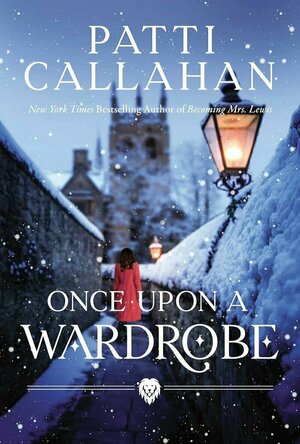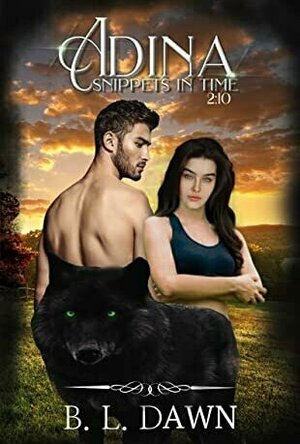
Dust: An Elysian Tail
Games and Entertainment
App
"This is one of the best games I've played on iOS this year." 5/5 - Touch Arcade The award-winning,...

African Recipes 4000+
Food & Drink and Lifestyle
App
Looking for African recipes, this application has more than 4000 trusted African recipes. ...

Fantastic Plastic by Flamin Groovies
Album Watch
The Flamin' Groovies story goes all the way back to 1965 when the band began as The Chosen Few in...
rock pop

Tomb of Annihilation (Dungeons and Dragons 5th Edition)
Tabletop Game
Dare to defy death in this adventure for the world’s greatest roleplaying game The talk of the...
![The Paris Network [Audiobook]](/uploads/profile_image/adb/dee0596d-e0e8-4650-b71f-ea5ec5ec6adb.jpg?m=1645979041)
The Paris Network [Audiobook]
Book
Paris, 1940: He pressed the tattered book into her hands. ‘You must go to the café and ask at the...
Lyndsey Gollogly (2893 KP) rated Rogue Warrior ( Dark Warrior Alliance book 10) in Books
Nov 25, 2022
Kindle
Rogue Warrior ( Dark Warrior Alliance book 10)
By Brenda Trim and Tami Julka
⭐️⭐️⭐️⭐️
🌶🌶🌶
The most important tenet of being a Dark Warrior is to uphold the law and order of the Tehrex Realm, but one look at an Angel's Kiss victim and Santiago breaks every rule. Thumbing his nose at the Vampire King and his life at Zeum, Santiago is shocked when his Omega refuses him sanctuary within the pack. Facing life as a lone wolf doesn't deter Santiago from his mission as he continues to fight evil and put an end to the destructive drug taking over the realm. He is forced to evaluate his principles when he discovers the assassin hired to kill him is his Fated Mate. Will the domino affect of killing his mate's brother threaten not only his position as a Dark Warrior, but her trust and love? Tori's human life ended centuries before when Freya found her dying on a battlefield. She's never fit in with the other Valkyrie and looks forward to fulfilling the required time with the Assassin's Guild so she can pursue her true passion of painting. What she plans as her last job is enticing for two reasons... the high dollar figure attached and the fact that the mark is her brother's killer. Tori curses fate when her hatred for Santiago is outweighed by her attraction. Determined to find the proof necessary to condemn Santiago, she isn't prepared when it backfires and her morals and beliefs are called into question.
Santi has always been a favourite of mine and I’m so glad I finally got to his story and mating. I loved Tori too! This was one of the best ones I’ve read so far and I do really love these warriors. It’s always fun catching up with the other warriors and the triplets. Definitely recommend.

A School of Daughters
Book
It’s funny how things sneak up on you… Kate Willoughby is a champion for...
Literary Fiction Women's Fiction
Merissa (13585 KP) rated Adina: Snippets in Time 2:10 (Times #3) in Books
Jun 19, 2023
For most of the book, I disliked Henrick intensely. His actions of the past were bad enough but his actions of the present just compounded that. He was completely selfish and had a caveman mentality even after Adina spoke with him. He frustrated the hell out of me. I'll be honest here too… Adina was the same. I understand the true mate bond is not something to be laughed at but I got whiplash from Adina so many times. The one thing I really hated was that Adina 'melted' whenever Henrick spoke so he was able to use her body against her. This book was headed for 3-star review, maximum, when they went back to Tall Elm and it is only that that changed my mind. Then both Adina and Henrick stood tall and showed who they are. As for the Tall Elm pack, they may have been the ones to help Tatum originally but I can't say as I like any of them.
It was good to read this from someone's perspective and it certainly helped to move the story along. I would love to read more about the group from Tall Elm but not the pack itself. I think I've seen enough of them!
If you've read books one and two, then I definitely recommend this one too. It may not be as good (in my opinion) as Tatum's but definitely still worth reading. I look forward to continuing with this series.
** same worded review will appear elsewhere **
* A copy of this book was provided to me with no requirements for a review. I voluntarily read this book; the comments here are my honest opinion. *
Merissa
Archaeolibrarian - I Dig Good Books!
Jun 19, 2023

Once Upon a Wardrobe
Book
Now available in trade paper with an eye-catching new cover from the bestselling author of Becoming...

His Secret Omega
Book
Sky Tancredi is an omega with a secret. He’s had a crush on Kian, his best friend’s older...
Dark Omegaverse MM Romance

